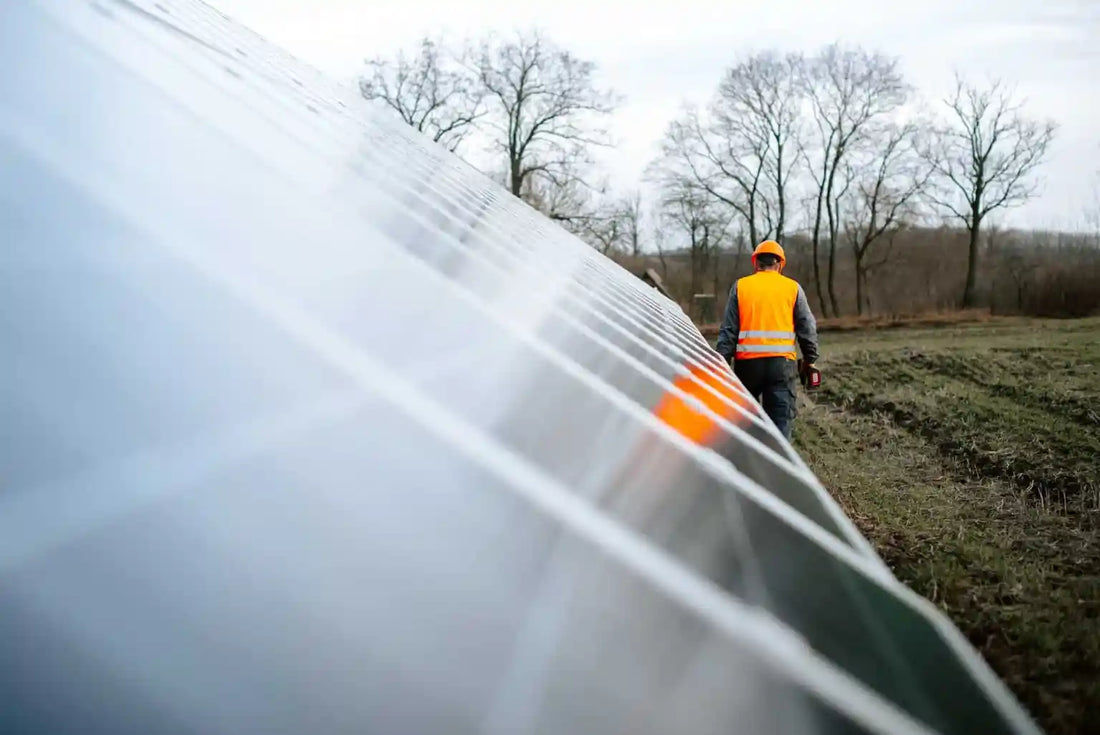
Demystifying Solar Panel Efficiency: Tips for Optimal Performance
In recent years, solar energy has taken centre stage as a clean, renewable, and cost-effective solution for homeowners seeking to lower their utility bills and reduce their carbon footprint. Key to harnessing the full potential of solar energy is understanding solar panel efficiency. Solar panel efficiency refers to the proportion of sunlight that is converted into electricity, and factors such as materials, temperature, and installation can significantly influence it.
As a trusted provider of solar solutions in Australia, Green Banks is dedicated to equipping you with the knowledge and resources needed to maximise the benefits of your solar installation. In this comprehensive guide, we’ll demystify the concept of solar panel efficiency, explore the factors that may impact it, and provide practical tips and considerations for achieving optimal performance from your solar panels.
Achieving maximum efficiency not only ensures that you get the most out of your solar energy investment but also enables you to maximise energy savings. We’ll take a closer look at the role of solar panel materials, the impact of weather and temperature, the importance of correct installation and angle, and the ways in which regular maintenance can contribute to enhanced solar panel performance.
Whether you are new to solar energy or seeking ways to optimise your existing solar system further, this guide will provide invaluable insights into enhancing the efficiency of your solar panels and harnessing the full power of the sun. Join us on this journey towards an eco-friendly, energy-efficient lifestyle empowered by industry-leading expertise and the exceptional solar solutions offered by Green Bank.
1. Solar Panel Materials: Monocrystalline, Polycrystalline, and Thin Film
When it comes to solar panel efficiency, the materials used in their construction play a significant role. There are three primary solar panel types available for residential applications.
- Monocrystalline: Recognised for their sleek black appearance, monocrystalline panels are made from a single crystal structure, resulting in higher efficiency levels. Although they tend to be more expensive, the superior energy conversion rates and space efficiency make them a popular choice for Australian homeowners.
- Polycrystalline: These panels have a distinct blue hue and consist of multiple crystal structures, contributing to slightly lower efficiency levels compared to monocrystalline panels. However, with continuous improvements in the manufacturing process, polycrystalline panels can still provide exceptional performance at a lower cost.
- Thin Film: As the name suggests, thin film panels are made by depositing a thin layer of photovoltaic material onto a solid surface. While they are more affordable and flexible, thin film panels generally have lower efficiency levels than their crystalline counterparts.
2. Impact of Weather and Temperature on Solar Panel Efficiency
The relationship between weather, temperature, and solar panel efficiency is complex. While Australia is known for its abundant sunlight, it’s essential to understand how weather and temperature fluctuations can affect your solar system.
- Temperature: Surprisingly, solar panels can lose efficiency as temperatures rise. Most panels are tested at 25°C, and their efficiency may drop by approximately 0.3-0.5% per degree increase. Installing panels with a temperature coefficient suited to your region’s climate can help mitigate this effect.
- Cloud Cover: Although solar panels will still generate electricity on cloudy days, their efficiency will be lower due to reduced sunlight. Consider installing a battery storage system to store excess power gathered during sunnier periods for use on overcast days.
- Dust and Debris: Accumulated dirt, dust, and debris can obstruct sunlight from reaching your solar panels and decrease their efficiency. Regular cleaning is essential to maintain optimal performance.
3. Importance of Correct Installation and Angle
To maximise solar panel efficiency, proper installation and positioning are critical. The angle and orientation of your panels can significantly impact the amount of sunlight they receive.
- Angle: The optimal angle for your solar panels depends on your home’s latitude. In Australia, the general recommendation is to tilt your panels at an angle equal to the latitude angle, so in Sydney (35°S), the ideal tilt angle would be approximately 35 degrees.
- Orientation: For maximum sun exposure, solar panels should face true north. Small deviations to the east or west may only result in minor efficiency losses but could be necessary based on your roof’s design or shading.
Consulting with a trusted solar solutions provider like Green Bank ensures that your panels are installed with expert attention to these critical aspects.
4. Regular Maintenance and System Upgrades
Keeping your solar panels functioning at peak efficiency also requires regular maintenance and periodic system upgrades.
- Cleaning: Dust, dirt, and debris can accumulate on your panels and diminish their performance. Regular cleaning – either on your own or with professional assistance – is vital to maintaining optimal efficiency.
- Inspection: Conduct periodic inspections to check for damaged panels, loose connections, or signs of wear and tear that could impact your solar system’s performance.
- System Upgrades: As the solar technology landscape evolves, consider upgrading your solar panels or investing in newer, more efficient models to maximise energy generation and savings.
Conclusion: Harness the Full Potential of Solar Energy
Understanding the factors influencing solar panel efficiency and implementing best practices can significantly enhance the performance of your solar energy system. By choosing the right panel materials, considering the impact of weather and temperature, ensuring proper installation, and conducting regular maintenance, you’ll be well-equipped to maximise your solar energy investment.
With the guidance of trusted solar solutions like Green Bank’s 520w solar panel, you can embrace eco-friendly, energy-efficient living and harness the full power of the sun. Together, we can work towards a greener future for our homes and our planet. Contact us today to get started!


